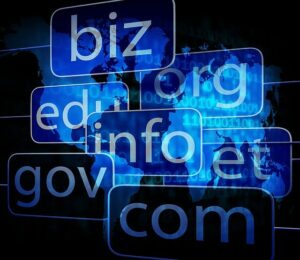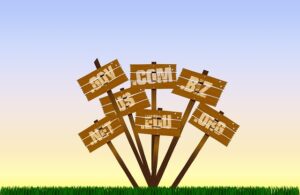Have you ever subscribed to a company’s email list and received an immediate response thanking you for signing up? That’s an autoresponder at work.
Autoresponders are automated email systems that send pre-written messages to subscribers based on specific triggers, such as signing up for a list or making a purchase. They are a powerful tool that can help businesses save time, increase engagement, and boost sales.
Imagine you run an online store that sells organic skincare products. A new customer makes a purchase and immediately receives an email thanking them for their order and offering a discount on their next purchase. A few days later, they receive another email with tips on how to incorporate the products into their daily routine.
These automated messages help build a relationship with the customer, encourage repeat purchases, and ultimately drive revenue for your business. This is just one example of how autoresponders can be used to benefit a business.
In this article, we’ll explore the ins and outs of autoresponders and how they can be leveraged for success.
Key Takeaways
 Autoresponders are automated email systems that save time, increase engagement, and boost sales by sending pre-written messages based on triggers.
Autoresponders are automated email systems that save time, increase engagement, and boost sales by sending pre-written messages based on triggers.- They require a solid email marketing strategy tailored to audience needs, segmented based on interests and preferences, and personalized with brand colors, logos, and images to increase open rates, click-through rates, and conversions.
- Email marketing is a vital tool for businesses to connect with their audience and drive sales, and email automation saves time and effort while increasing engagement, trust, and loyalty.
- Crafting engaging content that resonates with the target audience, optimizing subject lines and calls to action, and testing different strategies are crucial for the success of effective email campaigns that drive engagement, conversions, and long-term loyalty.
The Role of Email Marketing in Business
You can’t afford to overlook the power of email marketing in your business strategy. It’s a vital tool that allows you to connect with your audience and drive sales.
By implementing effective email marketing strategies, you can increase your brand’s visibility and create a loyal customer base. One of the most significant benefits of email automation is that it saves time and effort. You can create a series of personalized emails that can be automatically sent to your subscribers based on their behavior or actions.
This allows you to stay in touch with your audience without having to manually send out individual emails. Another benefit of email automation is that it helps to increase engagement with your audience. When you send out personalized and relevant emails, your subscribers are more likely to open and interact with them.
This helps to build trust and loyalty with your audience, which can lead to increased sales and revenue. In conclusion, email marketing is an essential tool for any business looking to connect with their audience and grow their brand. By implementing email automation, you can save time and effort while increasing engagement and driving sales.
Understanding Automated Email Systems
Ah, the wonders of automated email systems! With their ability to send out pre-written messages to your subscribers, you can sit back and relax while your marketing campaign works its magic.
Automated email benefits are numerous, as they allow you to save time and resources, while increasing the effectiveness of your email marketing efforts. By setting up an email automation strategy, you can engage with your audience in a more personal and targeted way.
One of the main benefits of automated email systems is their ability to nurture leads and build relationships with your subscribers. By creating a series of automated messages that are triggered by specific actions or events, you can provide your audience with relevant and helpful content that will keep them engaged with your brand. This can lead to increased brand loyalty, as well as higher conversion rates and sales.
Another advantage of email automation is that it allows you to scale your marketing efforts. With automated messages, you can reach a larger audience without having to increase your workload or resources. By leveraging the power of automation, you can create a more efficient and effective marketing campaign that delivers results.
So, if you haven’t already, it’s time to start exploring the benefits of automated email systems and incorporating them into your email marketing strategy.
How Autoresponders Work
Get ready to learn how autoresponders function and revolutionize the way you communicate with your subscribers. Autoresponders are a powerful tool that allows you to automate your email marketing campaigns.
They’re designed to send pre-written emails to your subscribers at predetermined intervals. With autoresponders, you can reach out to your subscribers with relevant content, promotional offers, and other important updates.
Autoresponders come in different types, each with its unique benefits. One type is the time-based autoresponder, which sends emails at predetermined intervals, such as a welcome email when someone signs up for your mailing list.
Another type is the action-based autoresponder, which sends emails based on specific actions taken by your subscribers. For instance, you can send a thank you email to someone who made a purchase on your website.
Autoresponders offer numerous benefits to businesses of all sizes. They save time and resources by automating your email marketing campaigns.
They also help you build relationships with your subscribers by sending them relevant and timely content. With autoresponders, you can segment your subscribers based on their interests and preferences, ensuring that your emails are targeted and personalized.
Ultimately, autoresponders can help you increase your email open rates, click-through rates, and conversions, leading to more revenue and growth for your business.
Creating Effective Autoresponder Campaigns
Now it’s time to craft autoresponder campaigns that truly resonate with your subscribers and keep them engaged with your brand. This is where email automation techniques come into play. By using automation, you can send personalized messages to your subscribers based on their behavior and preferences. This helps you build a stronger relationship with your audience and increase the chances of conversions.
To create effective autoresponder campaigns, you need to have a solid email marketing strategy in place. It’s important to understand your audience and what they’re looking for from your brand. This will help you tailor your messages to their needs and interests.
You should also have a clear goal in mind for each campaign, whether it’s to promote a new product or service, educate your audience, or simply keep them engaged. One of the most important things to remember when creating autoresponder campaigns is to keep them engaging and relevant.
Make sure your messages are visually appealing and easy to read, and include a clear call to action. You should also segment your audience based on their interests and behavior, so you can send them targeted messages that are more likely to resonate with them.
By following these tips, you can create autoresponder campaigns that are effective, engaging, and help you achieve your marketing goals.
Setting Up Your Autoresponder
To set up your email campaign, you’ll need to choose the right email marketing platform, select a template that matches your brand’s image and create engaging content that will grab your audience’s attention.
When choosing your email marketing platform, consider its features such as automation, segmentation, and A/B testing. These features will help you optimize deliverability and increase the effectiveness of your autoresponder campaign.
Once you’ve selected your email marketing platform, it’s time to customize your email templates. Make sure that your templates are responsive and mobile-friendly. This will ensure that your emails look great on all devices and increase the chances of your audience engaging with your content.
Personalize your emails with your brand’s colors, logos, and images to create a consistent and memorable experience for your subscribers.
Create engaging content that will grab your audience’s attention. Use a clear and concise subject line to entice your subscribers to open your emails. Keep your content relevant and valuable to your audience.
Include a clear call to action that encourages your subscribers to take action. By following these steps, you’ll be able to set up an effective autoresponder campaign that will engage your audience and drive results for your brand.
Segmenting Your Email List for Maximum Impact
When you segment your email list, you can target specific groups of subscribers with personalized content that speaks directly to their interests and needs. Email segmentation strategies are essential for optimizing engagement rates and increasing the effectiveness of your email marketing campaigns.
By dividing your email list into smaller groups based on demographics, behavior, or interests, you can tailor your messages to each segment and improve your chances of converting subscribers into customers.
One effective email segmentation strategy is to segment your list based on subscriber behavior. This means dividing your list into groups based on how subscribers interact with your emails, such as whether they open, click, or convert. By doing this, you can send targeted messages to each group that are more likely to resonate with their interests and needs.
Another email segmentation strategy is to segment your list based on demographics or interests. This means dividing your list into groups based on factors such as age, gender, location, or interests. By doing this, you can send targeted messages to each group that are more likely to appeal to their specific needs and preferences.
For example, you can send a follow-up email to subscribers who opened your previous email but didn’t click on any links, offering them a special discount or incentive to encourage them to take action. Additionally, you can send a promotional email for a new product to subscribers who have previously purchased similar products or expressed interest in that category.
Overall, email segmentation is a powerful tool for improving the effectiveness of your email marketing campaigns. By targeting specific groups of subscribers with personalized content, you can increase engagement rates, improve conversion rates, and ultimately drive more revenue for your business.
So, take the time to segment your email list and experiment with different strategies to see what works best for your audience.
Personalizing Your Emails with Dynamic Content
Make your emails stand out by using dynamic content ideas that cater to your subscribers’ interests and needs. Personalization techniques are crucial in creating an engaging and memorable experience for your subscribers.
With dynamic content, you can tailor your emails to meet the unique preferences and behaviors of each subscriber, making them feel special and valued.
One way to incorporate dynamic content is by using personalized images. You can showcase different product images based on the subscriber’s past purchases or interests. For example, if a subscriber has previously purchased a red dress, you can display images of similar styles or colors in your future emails. This technique not only personalizes the email but also increases the chances of a purchase.
Another effective way to use dynamic content is by incorporating personalized recommendations. You can suggest products or content that align with the subscriber’s interests or browsing history. For instance, if a subscriber has been browsing through your website’s travel section, you can send them an email with personalized recommendations on the best travel destinations or travel gear. This technique not only creates a personalized experience but also increases engagement and click-through rates.
Overall, personalizing your emails with dynamic content is a game-changer in email marketing. It not only captivates your subscribers’ attention but also increases the chances of conversions. By utilizing dynamic content ideas and personalization techniques, you can create a memorable experience that sets your emails apart from the rest.
Measuring Success with Autoresponders
As you navigate the waters of email marketing, measuring the success of your automated email sequences is like charting a course on a map – it’s important to track progress and adjust your strategy accordingly.
Measuring engagement and analyzing metrics are two key components of this process. By tracking how many people are opening your emails, clicking through to your website, and making purchases, you can gain valuable insights into what’s working and what isn’t.
To measure engagement, you’ll want to look at metrics like open rates, click-through rates, and conversion rates. Open rates tell you how many people are actually opening your emails, while click-through rates show how many are clicking on the links inside. Conversion rates, meanwhile, tell you how many people are taking the desired action, such as making a purchase or filling out a contact form.
By tracking these metrics over time, you can see which emails are resonating with your audience and adjust your strategy accordingly.
In addition to measuring engagement, it’s also important to analyze other metrics like bounce rates and unsubscribe rates. Bounce rates tell you how many emails were undeliverable, while unsubscribe rates show how many people are opting out of your email list.
While it’s natural to see some bounce and unsubscribe rates, if these numbers are consistently high, it may be a sign that you need to reevaluate your email content or targeting strategy. By regularly analyzing all of these metrics, you can fine-tune your autoresponder sequences to ensure they’re delivering the best possible results for your business.
Integrating Autoresponders with Other Marketing Tools
Integrating autoresponders with other marketing tools can enhance your email marketing strategy and help you achieve better results. By using autoresponders in conjunction with social media platforms, you can expand your reach and connect with a broader audience.
Integrating autoresponders with social media allows you to share content that encourages your followers to sign up for your email list. You can then use your autoresponder to send targeted messages to these new subscribers, nurturing them into customers.
Maximizing lead generation with autoresponders is another benefit of integrating them with other marketing tools. By pairing your autoresponder with a landing page or opt-in form, you can capture leads and use your autoresponder to follow up with these potential customers.
The key to successful lead generation with autoresponders is to create a series of messages that educate and engage your leads. This helps build trust and credibility with your audience, increasing the likelihood that they will convert into paying customers.
Integrating your autoresponder with other marketing tools can also help you track the success of your email marketing campaigns. By leveraging analytics and tracking tools, you can monitor key metrics such as open rates, click-through rates, and conversion rates.
This information can help you refine your marketing strategy and improve your overall email marketing performance. By integrating autoresponders with other marketing tools, you can create a powerful marketing machine that drives leads and sales for your business.
Best Practices for Autoresponder Success
To ensure success with your automated email campaigns, you should focus on crafting engaging content that resonates with your target audience. Your emails should be personalized and relevant to the recipient, addressing their specific pain points and needs. Use a conversational tone to build a connection with your subscribers, and make sure each email has a clear purpose and call to action.
Optimizing your subject lines and calls to action is also crucial for autoresponder success. Your subject line is the first thing your subscriber sees, so make it compelling and attention-grabbing. Use power words, personalization, and urgency to entice your subscribers to open your emails. Your call to action should be clear and direct, prompting your subscribers to take the desired action, such as making a purchase or signing up for a webinar.
Testing different strategies is key to finding what works best for your business. Experiment with different autoresponder scheduling and frequency, content formats, and calls to action to see what resonates with your audience. Use analytics to track your results and make data-driven decisions.
By applying these best practices, you can create effective automated email campaigns that drive engagement, conversions, and long-term customer loyalty.
Can autoresponders be used for non-business purposes?
Yes, autoresponders can definitely be used for non-business purposes. In fact, personal autoresponder usage has become increasingly popular in recent years as more and more individuals have recognized the benefits of using an autoresponder for personal branding.
Whether you’re a blogger, artist, musician, or any other type of creative professional, an autoresponder can help you stay connected with your audience and build your personal brand. By setting up a series of automated emails, you can provide your subscribers with valuable content, keep them engaged with your brand, and establish yourself as an authority in your field.
So, if you’re looking to take your personal brand to the next level, consider using an autoresponder to help you achieve your goals.
Are there any legal concerns with using autoresponders?
Using autoresponders can be a powerful tool for businesses to communicate with their customers and save time. However, it’s important to be mindful of legal concerns and data privacy regulations such as GDPR compliance.
A recent case study showed a company facing legal consequences for failing to obtain proper consent and follow GDPR guidelines when using autoresponders. To avoid similar issues, it’s crucial to ensure that your autoresponder messages are clear, transparent, and that you have obtained the necessary consent from your audience.
By taking these steps, you can effectively use autoresponders while maintaining legal compliance.
What is the difference between an autoresponder and a regular email campaign?
When it comes to email marketing, two popular options are autoresponders and regular email campaigns. While both have their pros and cons, the main difference between the two is customization options and technical requirements.
Autoresponders are pre-written emails that are automatically sent out based on triggered actions, such as a new subscriber or a specific date. They require less technical knowledge and can save time by automating the process.
Regular email campaigns, on the other hand, offer more customization options and can be tailored to specific audiences or events. However, they require more technical knowledge and may take more time to set up.
Ultimately, the choice between an autoresponder and a regular email campaign depends on your specific marketing needs and technical abilities.
Can autoresponders help with lead generation?
To answer your question, yes, autoresponders can definitely help with lead generation.
By using lead magnet ideas, such as free resources or exclusive offers, you can entice potential customers to sign up for your email list. Once they do, your autoresponder can immediately send a personalized message to thank them for subscribing and provide them with the promised content.
This timely response not only builds trust with your audience but also sets the tone for future interactions. With a well-crafted autoresponder sequence, you can nurture those leads and eventually convert them into paying customers.
So, if you want to improve your lead generation efforts, consider incorporating an autoresponder into your email marketing strategy.
How often should autoresponder emails be sent out?
When it comes to sending out autoresponder emails, there are a variety of frequency options available to you. It’s important to consider your audience and the purpose of your emails when deciding on a schedule.
Some companies choose to send a daily email, while others opt for a weekly or monthly newsletter. Whatever frequency you choose, it’s crucial to ensure that the content you’re sending out is of high quality.
Your subscribers have opted in to receive your emails, so it’s important to provide them with valuable information that they’ll find useful. By sending out well-crafted emails on a consistent basis, you’ll be able to keep your subscribers engaged and interested in what you have to say.
By now, you should have a clear understanding of what autoresponders are and how they can benefit your business.
In summary, autoresponders are a powerful tool in email marketing that allow you to automate your communication with customers and prospects. They can save you time and effort while also delivering personalized content to your audience.
By following best practices and measuring your success, you can optimize your autoresponder campaigns and integrate them with other marketing tools for even greater results.
So what are you waiting for? Start implementing autoresponders in your business today and watch your email marketing soar to new heights!





